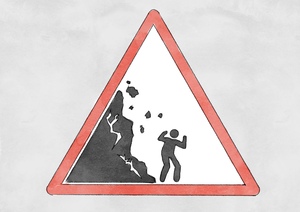
2.2 Early substance use in high-risk adolescents
Adolescents identified as ultra-high risk (UHR) for psychosis often start using tobacco, cannabis, and other substances earlier than their peers.

2.2 Early substance use in high-risk adolescents
Adolescents identified as ultra-high risk (UHR) for psychosis often start using tobacco, cannabis, and other substances earlier than their peers.
The effects of these substances on their developing brains can differ significantly. Research has found that UHR adolescents typically show more severe use of cannabis and tobacco. This highlights the unique challenges they face and the importance of understanding these differences for effective support and treatment.
Among individuals considered at ultra-high risk (UHR) for psychosis, only around 1/3 WILL DEVELOP A LONG-TERM PSYCHOTIC DISORDER.
However, a significant number of UHR individuals who do not transition to full psychosis may still experience persistent mild psychotic symptoms and develop other lasting mental health issues.
These individuals need to receive ongoing treatment and support from mental health services to manage their symptoms effectively and maintain their well-being over time.
The concept of “ultra-high risk’ for psychosis”: who is more vulnerable?
Identifying people at high risk of developing a psychotic disorder has been a priority for clinicians. Early treatment for this group is believed to potentially prevent the disorder from developing.
To be classified as ULTRA-HIGH RISK (UHR) FOR PSYCHOSIS, individuals typically fall within the age range where the risk of developing psychosis is highest (late adolescence to early adulthood), and they must meet one or more of the following criteria:
Each of these criteria must also be associated with a noticeable decline in their ability to function normally or a history of chronic low functioning.
Identifying and providing support to individuals meeting these criteria is essential during this critical stage of their lives.
What age faces the highest risk for addiction?
Adolescents are highly prone to addiction and mental disorders, with drug use typically starting during this critical period.
The highest usage occurs among 18-25-year-olds.
Adolescence is characterized by experimentation, curiosity, susceptibility to peer pressure, rebellion, and low self-worth, making teens especially vulnerable to substance abuse.
This stage of life involves changing relationships and environmental influences, which can be either risk factors or protective factors. Protective factors are crucial in helping young people achieve good health and reach their full potential as they grow into adults.
However, drug abuse can seriously disrupt this important stage of development, making it harder for teens to think critically and build essential cognitive skills.
Those who use drugs often face more physical and mental health issues, leading to overall poorer well-being.
Early substance use triggers long-term challenges
Starting substance use at a young age is strongly linked to long-term health and social challenges. Substances like tobacco, alcohol, cannabis, stimulants, and opioids can increase the risk of developing substance use disorders (SUDs).
Vulnerable individuals often begin using substances 2–3 years earlier than their peers, making them more likely to struggle with addiction and significant social and psychological difficulties.
Early cannabis use, in particular, has been connected to a higher risk of severe mental disorders, as well as increased suicidal thoughts and attempts.
Young people who start using substances early often experience longer periods of untreated mental health issues, leading to poorer overall well-being.
Ultimately, early substance use greatly increases the risk of developing severe mental health disorders and long-term struggles.